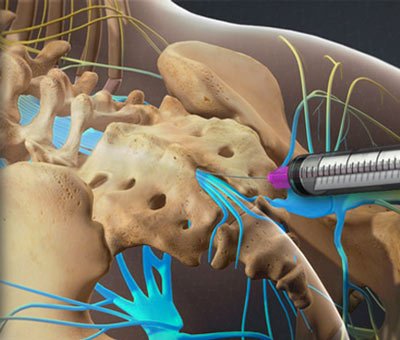Since back pain treatment can take time, it’s vital that you’re able to undergo medical treatment and physical therapy without constant, nagging discomfort. A thoracic epidural injection is an ideal choice for reducing middle back pain and inflammation so you can function and heal from a back injury or disease that’s kept you from enjoying your favorite activities. Look to the expertise and personal care you receive at Pain Management in Manhattan NYC for the safe execution of a thoracic epidural steroid injection. When administered by an experienced pain doctor, it’s both very successful and pain-free.
Located in your upper and middle back, the thoracic region is subject to pain just like your neck and low back. If you’re dealing with an injury, chronic pain or a degenerative condition, you can enhance your rehabilitation with a thoracic epidural steroid injection, available in Midtown Manhattan at pain clinic New York.
Your spine is a complex and delicate system that may become compromised due to overuse, age or other debilitating conditions. Thoracic epidural steroid injections provide relief by inserting medicine directly into the epidural sac that encases the affected nerves. The injection reduces inflammation and pain with equal measure.
Conditions Treated by a Thoracic Epidural

- Pinched or irritated nerve
- Degenerative disc disease
- Thoracic post-surgical spine syndrome, in which back pain continues or worsens after surgery
- Herniated discs
- Cervical radiculopathy
- Spinal stenosis in the thoracic region
- Arthritis
- Muscle spasms in the neck
Some pain professionals use this injection as a diagnostic tool to pinpoint the exact location of your pain. If it’s effective, your top NYC pain management specialist knows where to treat the cause of your pain.
Before Treatment
Preparing for your injection involves knowing what to expect. Also, be sure to communicate any questions and concerns to your doctor before your procedure. Your doctor may:
- Look for any potential signs of infection or illness such as fevers and achiness
- Ask about medications you’re taking regularly
- Want to know if you’ve had any problems with injections or any of the products used in conjunction with injections
- Insist you tell him if you suspect or know you’re pregnant
- Initiate a thorough discussion of your medical history
Although they are slight, there are some risks associated with a thoracic epidural injection, but they’re greatly reduced when you rely on nationally recognized pain doctors, who are experienced in epidural injections.
The Process of Getting a Thoracic Epidural Steroid Injection
All injection procedures are completed in your Manhattan doctor’s clinic. In general, the procedure follows a number of common steps:
- You’re asked to lie face down or on your side on a raised table.
- If you’re feeling noticeably anxious and wish to receive a sedative, that’s administered at this time.
- The area to be injected is cleaned and disinfected.
- Using a fluoroscope, your doctor carefully inserts the needle into the epidural area and injects contrast dye to make sure the needle is in the right spot.
- The combination of steroids, anti-inflammatories and saline bathes the aggravated nerves with medicine and pushes aggravating fluid out of the area.
You may feel a sense of fullness, pressure or discomfort because of the liquid volume. The amount of three to 10 milliliters is relatively small, but the epidural space is small as well.
Thoracic Epidural Steroid Injection Recovery
You only need to remain in the procedure room for about 15 to 20 minutes if you didn’t receive a sedative. If you have taken a sedative, your doctor asks you to remain longer for observation. You also must have someone with you to drive you home.
Once you return home, you’ll most likely need to rest quietly for the rest of the day. You’re able to return to normal activity the following day. If you took a sedative, it’s better not to drive or make important decisions for 24 hours.
After Getting a Thoracic Epidural
It’s common to not feel much relief initially. You may even feel a touch more uncomfortable for a brief amount of time. Some individuals report that it can take up to a week before their pain begins to drastically subside. With your doctor’s permission, you may continue controlling your pain as you have in the past during this interim.
If you feel warmth or redness at the injection site after several hours or your numbness continues for more than a couple of days, report it to your doctor. You also need to schedule a follow-up appointment with your doctor to discuss any rehabilitation plans. Thoracic epidural steroid injections can be the beginning of your treatment plan to take control of your upper and middle back pain today. Contact Pain Management NYC to see if you qualify for one.

Boleslav Kosharskyy, MD, is a top-rated, best-in-class interventional pain management doctor. He is board-certified in Anesthesiology, Interventional Pain Medicine, and Palliative Care.
Dr. Kosharskyy is an Associate Professor of Anesthesiology and Rehabilitation Medicine at Albert Einstein Medical College. He’s also the Associate Medical Director of Pain Medicine and Director of Anesthesia for the Joint Replacement Center at Montefiore Medical Center and Albert Einstein Medical College.
He is an active member of the American Society of Anesthesiology (ASA), the American Society of Regional Anesthesia and Pain Medicine (ASRA), and the New York State Society of Anesthesiologists (NYSSA)
